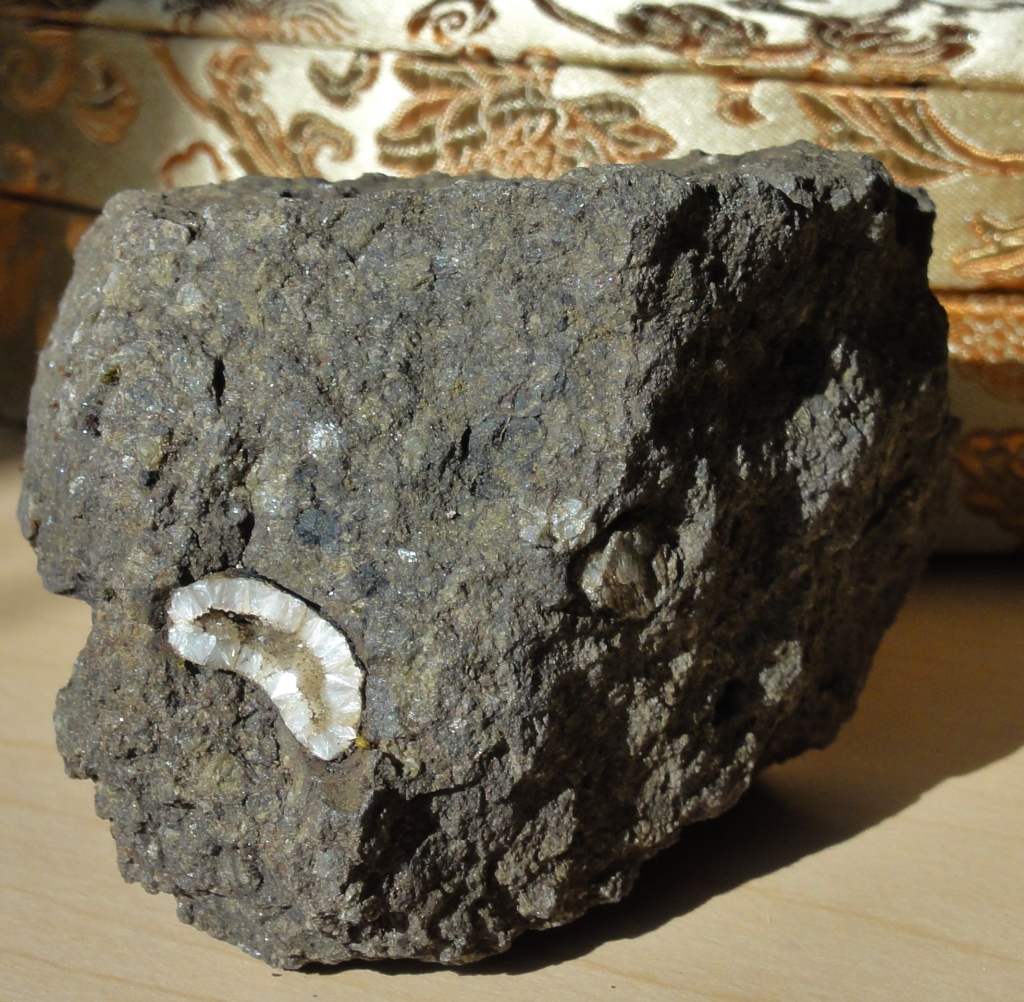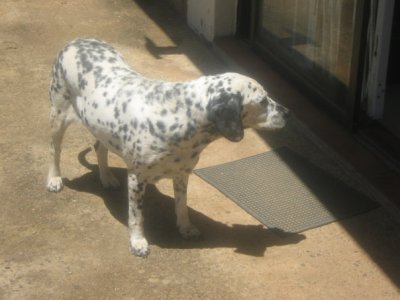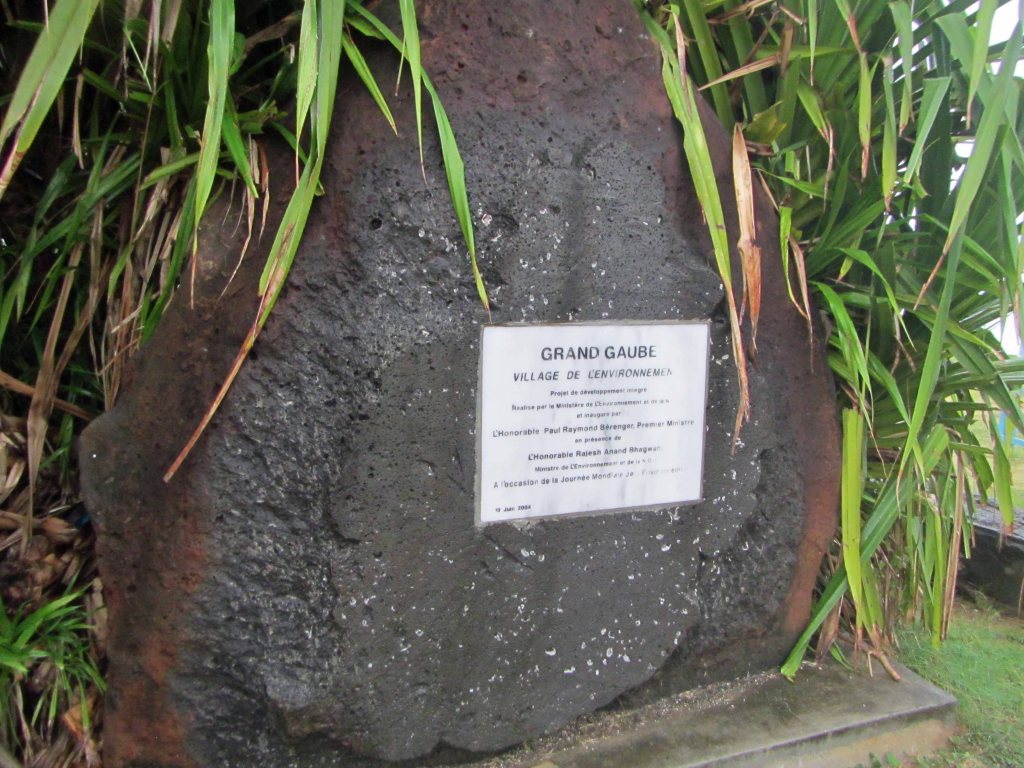
Continuing with some pictures from my trip to Mauritius back in March, for this week’s “Monday Geology Picture” post I am sharing some pictures of a large boulder of vesicular basalt. This particular boulder is located in the town of Grand Gaube in northern Mauritius and is used as a decorative stone on which a plaque has been mounted.
Vesicular basalt is a dark-colored volcanic rock that contains many small holes, more properly known as vesicles. A vesicle is a small cavity in a volcanic rock that was formed by the expansion of a bubble of gas that was trapped inside the lava. Sometimes, vesicles can become filled in with secondary minerals, such as calcite, quartz, or zeolites. When vesicles are filled with such minerals, they are called amygdales. The vesicular basalt boulder featured in this post contains some amygdales. Some of the vesicles in the boulder are filled with a clear to white mineral, possibly calcite.
The boulder featured in this post also has a notable reddish-brown weathering rind. A fresh (and beautiful!) surface of the basalt boulder was exposed when the boulder was cut to make a flat surface for displaying the plaque.
Here are a few more pictures of the vesicular (or amygdaloidal) basalt boulder:

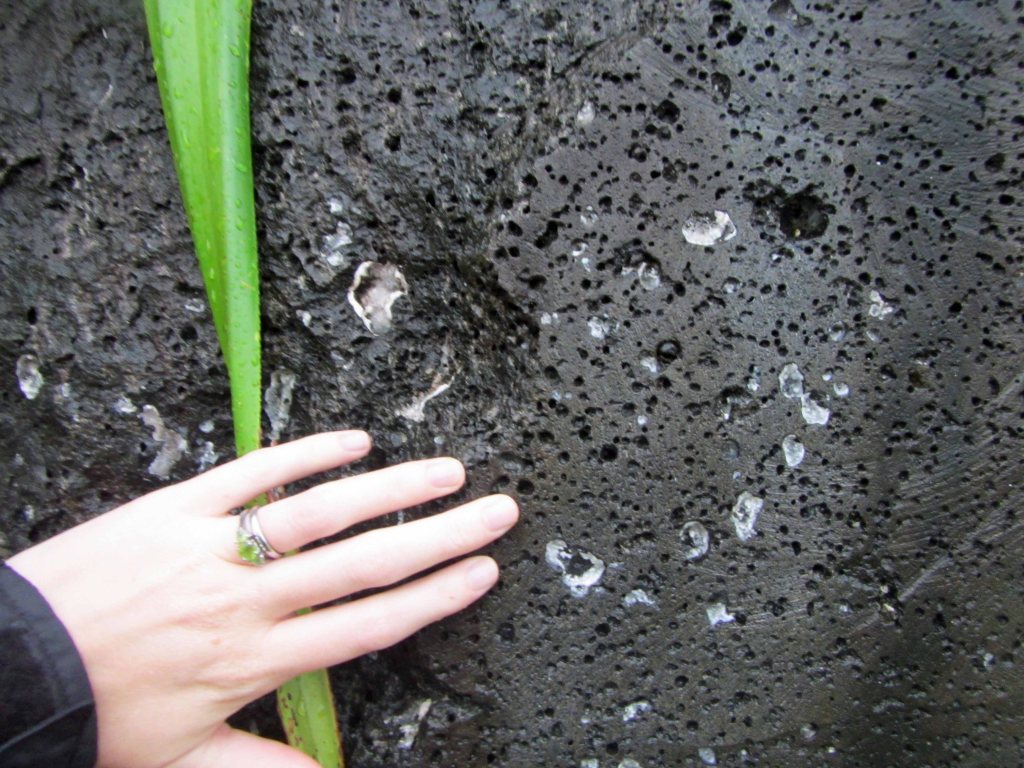
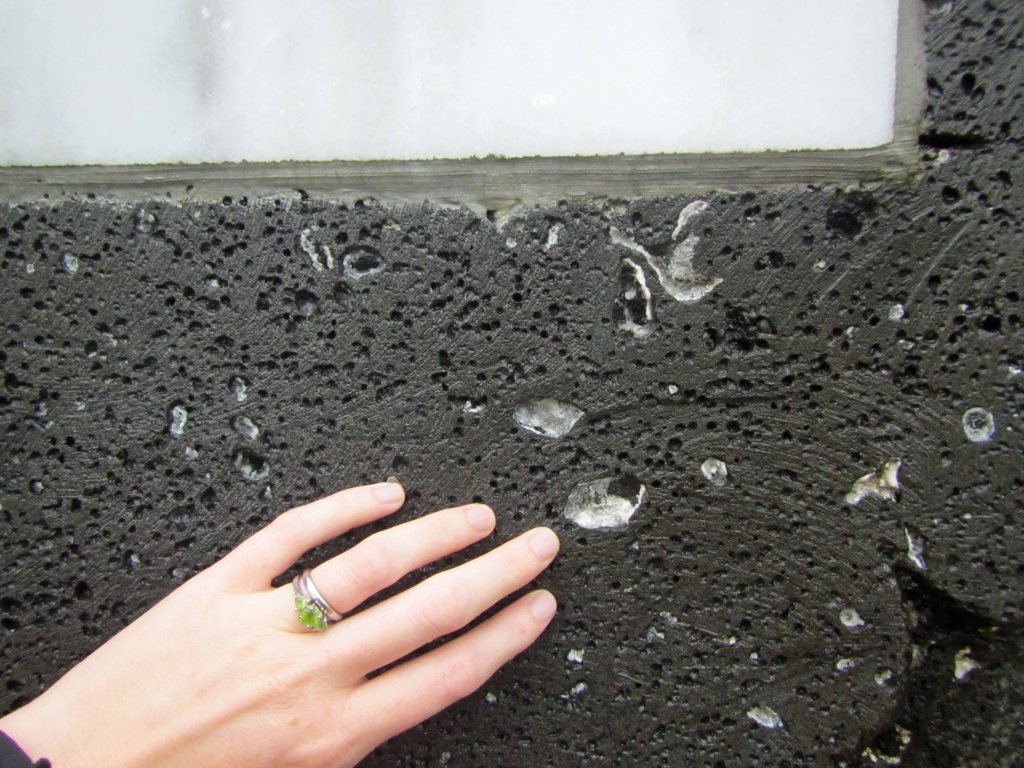
The boulder almost certainly originates from a local source since basalt is abundant on the young volcanic island of Mauritius. Basaltic rocks can be found all over the town of Grand Gaube. For example, basaltic rocks are commonly seen on Grand Gaube’s beautiful beaches. I shared one picture of a basalt-covered beach in Grand Gaube last week.
Below is another picture of basalt on the beach in Grande Gaube; this picture was taken at the resort where my husband and I stayed:
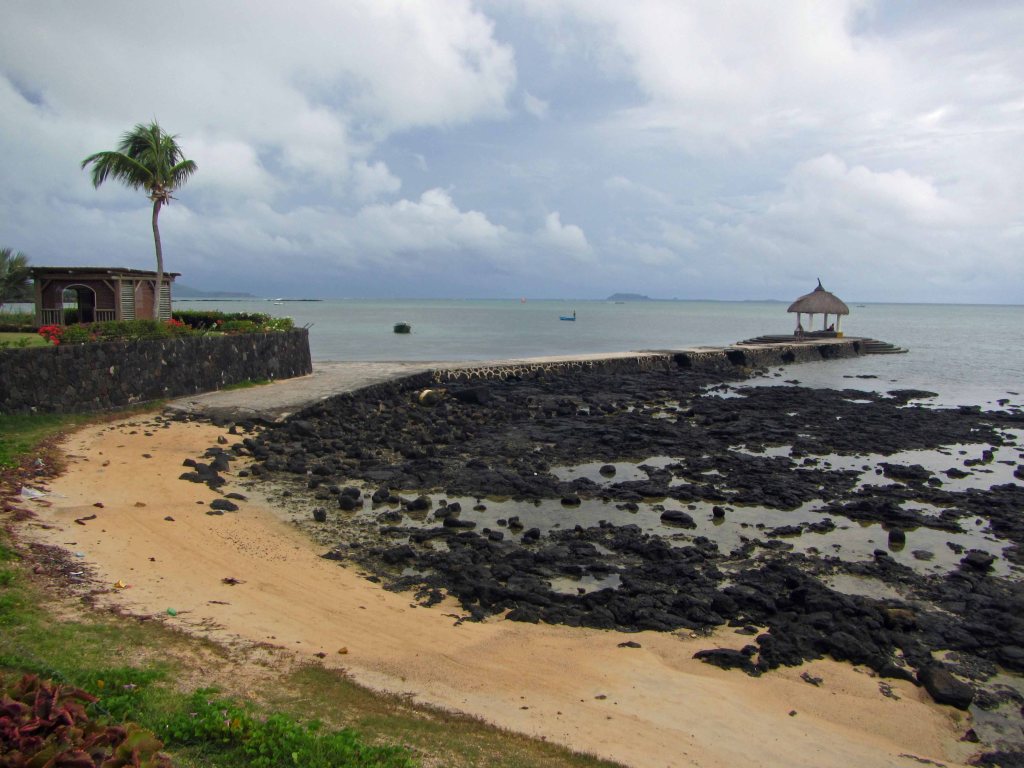
Stay tuned for more pictures from Mauritius!



